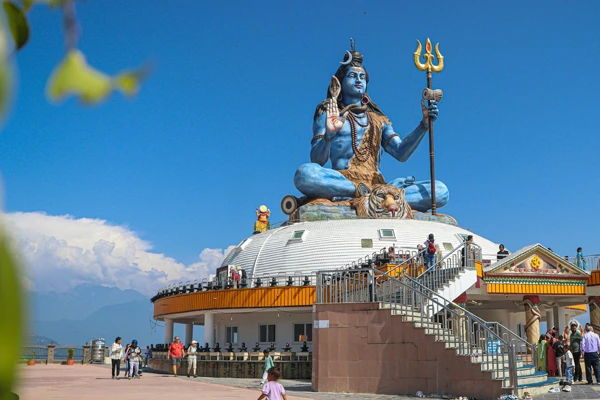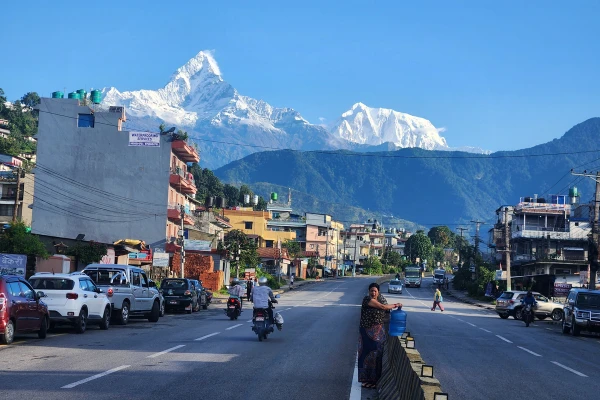Discover the exciting updates for the Everest Base Camp trek in 2025. From new trekking permits and improved accommodations to alternative routes and year-round accessibility, explore how these changes will enhance your adventure to the iconic base camp of Mount Everest. Learn about the latest advancements in gear, responsible tourism practices, and what you need to know for a memorable trek to Everest Base Camp this coming year.
What's New for the Everest Base Camp Trek in 2025?
Table of Contents
Everest Base Camp trek is one of the most sought-after desires that many adventure lovers plan to make at least once in their lifetime, and it is an incredibly challenging trek through the most beautiful Himalayas. One of the world's most famous trekking trails takes you to this region and the base camp of Mount Everest, the tallest mountain in the world. For decades, trekkers have trekked to the area, walking through the rough terrains just to get an opportunity to stand in the shadows of the most incredible mountain, Mount Everest. But as we progress towards 2025 and beyond, a few enhancements, advancements, and modifications will enhance the Everest Base Camp experience and trek in general regarding accessibility, sustainability, and comfort to the trekkers.
However, if you plan to start on this famous trail, you should anticipate this for the base camp trek to Everest in 2025.
New Permits and Regulations for 2025
With hiker traffic increasing year by year at the EBC trek, the Nepalese authorities have set up new rules on how to control tourist flow and have taken several steps to preserve the environment of this area. The following year, that is 2025, the measures will be a little tight, especially on the trekking permits. Trekkers previously required a Sagarmatha National Park entry permit and a TIMS – Trekkers information management system. However, starting in 2025, the government will start a new system of digital licenses that will also be much more effective in providing better protection for trekkers.
Due to the issuing of digital trekking permits, which would be fitted with satellite tracking, the movement of every trekker can be observed for security reasons. This system will also yield real-time data on the climate, enabling the organization to predict any changes in the conditions. Furthermore, these permits also allow the government to regulate the number of tourists trekking at any one time. This will help reduce overcrowding in the Everest region and help conserve this area.
Although the new system is likely to attract extra costs, it also guarantees efficient rescue and emergency backup for trekkers. Therefore, when planning your EBC trekking in Nepal, consider these new regulations and the possibility of more time to process the permits.
Enhanced Accommodation and Amenities Along the Route
More infrastructure has been developed throughout the EBC trekking trail in recent years, and there are expectations for even more development by 2025. Another significant impact that trekkers could bear is the realization of better standards of accommodation. While trekking to Mount Everest is generally considered a barren experience, modern facilities will create additional comfort while not detracting from the journey.
Teahouses and lodges located at the base camp trekking route of Everest are getting smarter with improved service provision, proper bedding, improved hygiene, and even a source of electric power in the form of solar. This means that despite the trekkers undertaking their expeditions at high altitudes, they are still able to have some little marks of comfort. Increased Wi-Fi provision in some of the far areas will also be made possible so that the trekking individuals can communicate their experiences with those back home.
There has also been brilliant news in recent years: people have been paying more attention to green energy. Most teahouses are also adopting the use of solar power to light lodges in a bid to reduce cases of global warming, among many others. This will not only decommission the carbon footprint in the region but also enable the trekkers to have their mobile phones, cameras, headlamps, etc, charged in some regions with no electricity source.
For those who chose more extensive group trips or just want space for themselves, there will also be more family and individual rooms available. Since such options will become common in 2025, the general perception of trekkers will be enhanced as it reduces the physical stress when on rest, even as one tries to get to the EBC.
Shorter and Alternative Routes to Everest Base Camp
Initially, it may have taken several days of walking to reach the base of Mount Everest, and it required between 12 to 14 days, at least in the past, combined with side trips for acclimatization. But what is the length of the treks to the Everest Base Camp in 2025? For trekkers who have less time to indulge on the trails, new and more accessible routes are being pioneered, like the short Eco treks, without compromising the scenery or experience.
The more frequent helicopter transfers are another change expected to happen in the future in 2025. Though trekkers from Lukla to the EBC base, the entire trekking is still present for those who want the whole trekking experience; however, helicopter treks will now allow skipping some of the durable trekking parts. For example, as opposed to the past, when one had to trek up to the base of Mount Everest, it is now possible to take a flight that will take one halfway through the trek and then commence the trek from that point to the 'final destination.'
There are also debates regarding extending new trekking trails to avoid overcrowded areas. This would bring new challenges for those who have been trekking for years and open new routes for individuals seeking a different experience and isolation away from the crowds. These other trails are perfect for those asking how many days the Everest Base Camp trek is and wish to have a different trail to reach the same amazing places.
Is Everest Base Camp Open All Year in 2025?
A common question among trekkers is: Is Everest Base Camp accessible throughout the year? Although the answer has always been technically yes, 2025 will bring changes in the perception of the right time to go on this journey. Preferably,, spring (March to May) and autumn (September to November) are considered the best trekking seasons. Still, there has been a gradual change in climate conditions, and so it is possible to trek in the winter and summer seasons as well.
What used to be considered off-season, particularly the coldest months of the year, are equally preferred by hikers due to the development and inventions of better equipment for hikers and better accommodation structures. Some people like to have the sector all to themselves, and this is possible in wintertime when trekking to the ever-active Everest Base Camp. Even though the temperatures will remain low, the current technology in the equipment and comparatively well-equipped teahouses ensure comfortable treks during the winter period.
Countryside treks during summer, which take place during the monsoon season, are also gradually gaining popularity due to the decrease in length and intensity of the monsoon season. In spite of enhanced trail conditions and advanced meteorology, trekkers can now successfully undertake base camp trek Everest in months previously considered invalid.
Still, it is crucial to mention that Mount Everest can climb all year round, but every season is different. The trekkers must always check on the prevailing circumstances and then organize the trek they fancy according to the trekkers.
Advancements in Trekking Gear and Supplies
As trekking technology improves, so does the equipment that trekkers using the EBC trail need. In 2025, new equipment will also be available for high-altitude trekking, which has made it safer and more comfortable. For all those who perceive the physical nature of the EBC trekking in Nepal as a challenge, acquiring such lighter but stronger gears will prove to be an innovation.
Trekking at high elevations is characterized by extreme chilly weather, and thus, the hiker will need to put on unique clothing and carry unique gadgets. By 2025, a new material will be used that provides better insulation, wind resistance, and moisture management so that the trekkers do not feel cold during their trekking. Down jackets, hiking shoes and boots, and better trekking poles are just some new products coming into the market.
Furthermore, there will always be more opportunities to hire good-quality equipment from Kathmandu or even from the trailside. They find it equally useful since they may not wish to spend so much money on equipment that they will only use once in their trekking expedition. These developments make it possible even for first-time trekkers to embark on the trek to Everest Base Camp.
Cultural Preservation and Responsible Tourism
Another primary focus for 2025 is promoting responsible tourism in the Everest region. As the number of trekkers rises, the region's cultural and environmental aspects must be protected. The Sherpa people, who have provided the primary input to the trekking industry, Mount Everest, have vowed to work with the government to encourage its tourists not to pollute the environment.
By 2025, trekkers will be expected to practice littering less, carry their own water bottles, avoid using plastic bottles, and engage mostly with responsible trekking agencies that are friendly to the environment. These measures are taken to preserve such a sensitive area as the vicinity of Everest Base Camp so that as many people as possible can complete the tour.





